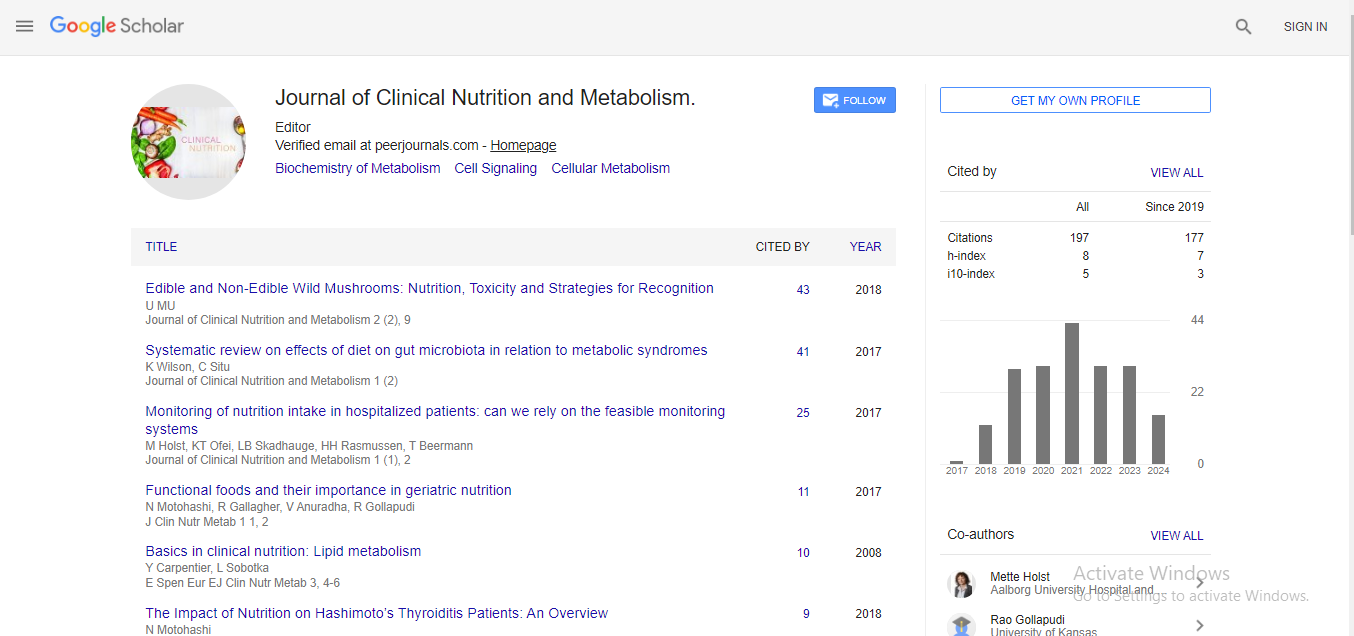Editorial, Jcnm Vol: 5 Issue: 2
Krabbe disease- Causes, Signs & Symptoms and Risk factors
Sarah Seifu*
Keywords: leukodystrophies, demyelination.
Krabbe illness (also known as globoid cell leukodystrophy) could be a severe neurologic condition. It’s a part of a gaggle of disorders called leukodystrophies, That result from the loss of fat (demyelination) within the system. Fat is that the protecting covering around nerve cells that ensures the speedy transmission of nerve signals. Krabbe illness is additionally characterized by abnormal cells within the brain known as globoid cells, that area unit massive cells that sometimes have over one nucleus. Causes Krabbe illness is caused by a alteration — a permanent modification within the deoxyribonucleic acid sequence that creates up a definite sequence. The mutation affects the merchandise that the sequence codes for. The sequence for Krabbe illness is often found on body fourteen. a toddler must inherit the abnormal sequence from each oldsters to develop the illness. The abnormal sequence leads to a shortage of a vital protein that your body desires known as galactosylceramidase (GALC).However, late onset cases have a rather completely different chromosomal mutation. GALC is associate degree protein that breaks down galactosylceremide and psychosine molecules within the brain. Krabbe illness patients will have psychosine levels that area unit a hundred times over those that don’t have the illness. Risk factors The chromosomal mutation related to Krabbe illness solely causes the illness if 2 mutated copies of the sequence area unit transmissible. A illness ensuing from 2 mutated copies is termed associate degree chromosome recessive disorder. If every parent has one mutated copy of the sequence, the danger for a toddler would be as follows: • A twenty five percentage likelihood of heritable 2 mutated copies, which might end in the illness • A fifty percentage of likelihood of heritable just one mutated copy, which might end in the kid being a carrier of the mutation however wouldn’t end in the illness itself • A twenty five percentage of likelihood of heritable 2 traditional copies of the sequence Signs & Symptoms Onset of Krabbe’s Leukodystrophy within the predominant infantile kind (90% of cases) happens between one and 7 months aged. A lateonset style of the disorder happens at eighteen months or a later age, together with adolescence and adulthood. The specific symptoms and severity of Krabbe’s Leukodystrophy vary from case to case. Infants full of Krabbe’s Leukodystrophy could also be fretful and to a fault irritable (hyperirritability). Vomiting, unexplained fevers, and partial state of mind area unit further doable symptoms. The lower extremities could have spastic contractions. Seizures characterized by alternating contraction and relaxation (clonic), or by continuous tension (tonic), may occur. Affected infant’s area unit supersensitive to varied stimuli like sounds. Mental and physical development could also be slow. Regression of antecedently noninheritable skills could occur in some cases. Owing to degeneration of sure elements of the brain, the legs area unit generally bolt extended at the hip and knee; the arms could also be revolved at the shoulder and extended at the elbow; and also the ankles, toes and fingers could also be flexed (decerebration rigidity). Visual defect caused by brain cortex degeneration may occur. People with Krabbe’s Leukodystrophy may have issue swallowing (dysphagia) and peripheral pathology, a condition characterized by muscle weakness; pain; numbness; redness; and/or burning or tingling sensations within the affected areas, particularly the arms and legs (extremities). Krabbe’s Leukodystrophy usually progresses to cause grievous complications. In the juvenile and adult types of Krabbe’s Leukodystrophy, the initial symptom could also be impaired management of voluntary movements and progressive rigidity of muscles within the legs (spastic paraparesis). Affected people with these types of the disorder may expertise progressive vision loss and illness touching multiple nerves (polyneuropathy).
 Spanish
Spanish  Chinese
Chinese  Russian
Russian  German
German  French
French  Japanese
Japanese  Portuguese
Portuguese  Hindi
Hindi 